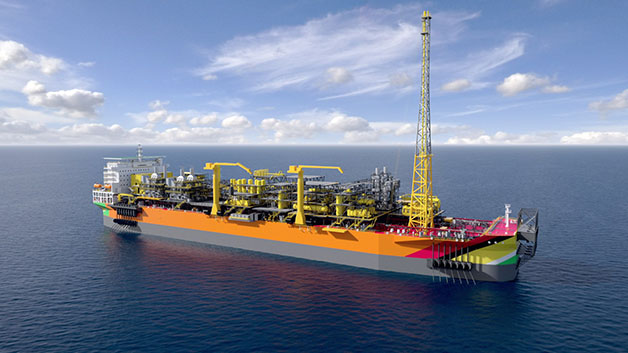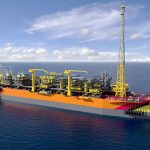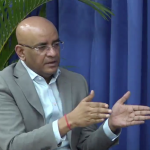
By Svetlana Marshall
President of ExxonMobil Guyana, Alistair Routledge has announced that his company has successfully completed the US$1B pipeline for the gas-to-energy project.
At a press conference today, the ExxonMobil Guyana President said the company is now waiting on the other components of the project to be completed to facilitate the process of safely transporting natural gas to Wales.
“The pipeline is now essentially, mechanically complete. It has been hydrotested, pressure test, and we have been going through the dewatering exercise and introducing nitrogen. So, we have a pipeline that is ready to introduce natural gas,” Routledge said.
The pipeline is designed to transport gas from Exxon’s offshore operations to a US$759M Power Plant and Natural Gas Liquids (NGL) Plant at Wales. The plants are being financed by the Government, and are expected to be completed by the end of 2025.
Routledge said in order to safely complete the pipeline, the Liza Destiny and Liza Unity Floating Production Storage and Offloading (FPSO) vessels were taken offline in July and August for a period of 12 days each, in order to connect the FPSOs to the risers on the pipeline.

“We had to shut down both of the two FPSOs in order to tie in the risers, the gas risers, to enable the gas export to take place in the gas-to-energy pipeline. So, we completed the two shut downs very successfully, on schedule, safely. The risers have been tied in and connected to the pipeline,” he explained.
Questioned whether the company experienced a drop in oil production in July and August due to the shutting down of the FPSOs, Routledge said while the vessels were taken offline, production was not lost but rather deferred.
“Really what happens in those sorts of instances is, the production is deferred. It is not that we lose the oil, is just that it will be produced later in the life of the asset. So, given that we were in plateau just now, the way you would count calculate that, is that as you come off the plateau, or you would expect the plateau runs a little lighter, you would produce it as you go down the decline,” he explained.
It was explained that the move to take the FPSOs offline was critical to ensure that the risers were safely connected to the FPSOs. The risers carry the hydrocarbons from the subsea wellhead on the seabed to the FPSO Unit on the surface.
The Government has been touting the gas-to-energy project as one of its hallmark projects, although it has faced some financing issues as it awaits approval for a loan from the US Exim bank.











You must be logged in to post a comment Login